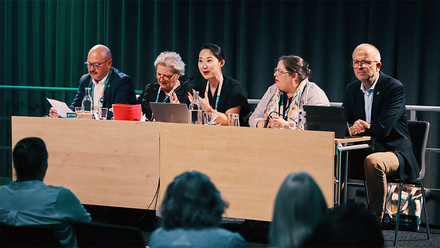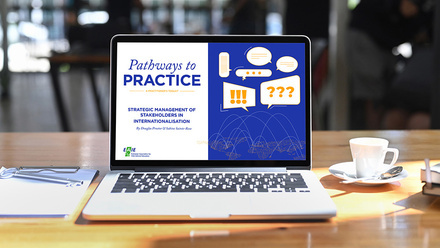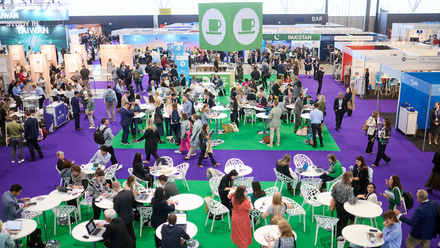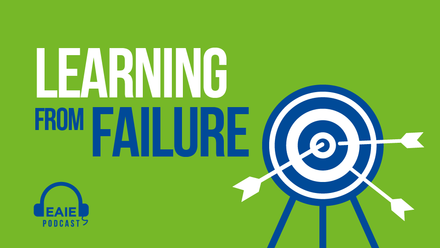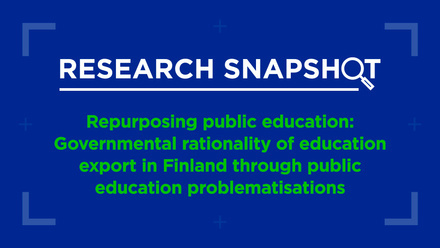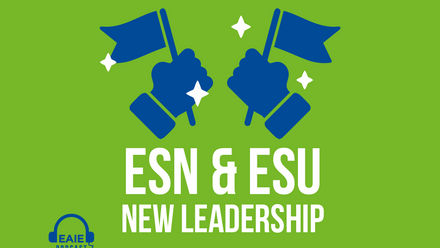Finding your tribe: the power of communities
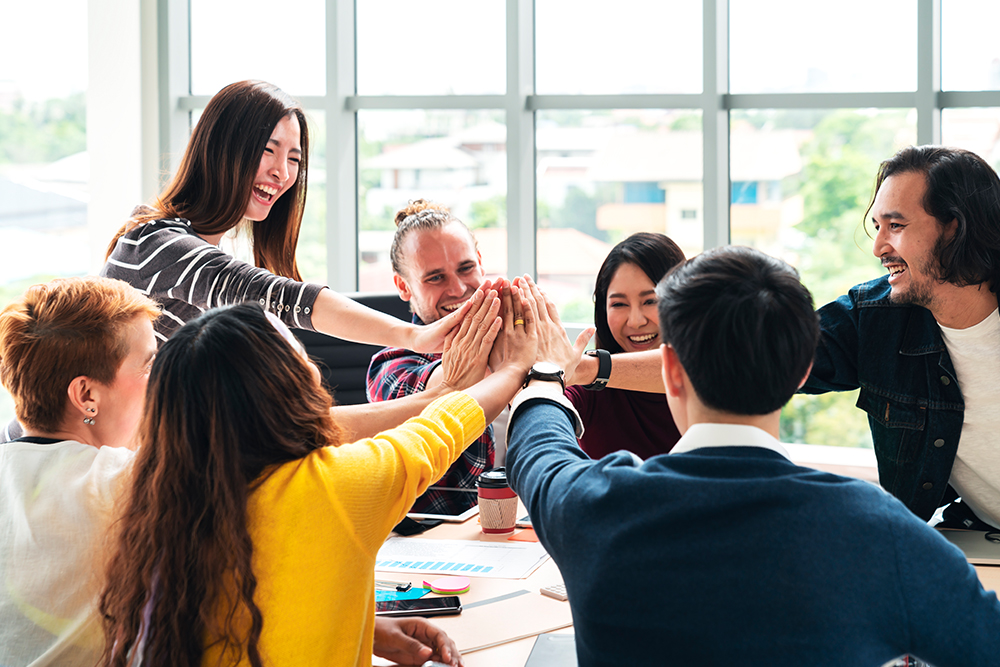
Working, learning and innovating increasingly take place in networks. Interacting with peers, professionals share their practice, knowledge and relevant contacts. This informal learning can be of great value to responding effectively to emerging questions and problems in the workplace, as it is contextualised within the organisational culture. However, as internationalisation practitioners, sometimes we are the only ones with specific internationalisation tasks and responsibilities in our departments and institutions: so, how do we find our peers and communities?
In this blog we present our personal lessons on how we find our tribes, both external to our institutions, as members of one of the EAIE Expert Communities (ECs), and internal to our institutions, as nomads engaging with various communities.
Outside our box: allowing for divergent thinking
As a group of six practitioners coming from different countries, academic disciplines, and professional roles, we have come together in our EAIE Expert Community Internationalisation at Home (IaH). Being able to discuss freely with each other the issues and challenges we meet in our home institutions and countries creates some much-needed distance to reflect, analyse and connect. In this process of cross-fertilisation we find inspiration as perspectives and experiences are shared, ideas are shaped and tested, and dreams can be put into action.
Especially over the past two years of the COVID-19 pandemic, we have met more frequently than ever before, using the online space to connect, imagine and innovate together in ways that have proven to be highly productive. Being able to think big and bold outside the box of our own institutions has provided each one of us with the energy and inspiration we need to keep going and growing professionally. For instance, our colleague Alfonso Diaz imagined how the value of such peer sharing and learning could be replicated at his institution University CEU Cardenal Herrera, and went on to create a group of ‘international ambassadors’, encouraging and engaging teachers towards systemic change. Katarina Askerc encouraged our EC to engage in deep discussions on vertical and horizontal alignment of the internationalised curriculum as a leading concept for implementation; this encouraged us to reflect on how concepts like inclusion, digitalisation, sustainability, and green practices relate to IaH practices and act within the IaH ecosystem.
The free flow of ideas, aided by the presence of different professional and cultural perspectives, has also empowered us to step out of our comfort zone and venture into collaborative writing as a group, resulting in a Pathways to Practice publication, several blogs and an article in EAIE Forum magazine.
Inside the box: converging and connecting
Internally, networked learning and participation in communities of practice are just as needed and meaningful. Several of us run or participate in learning communities or communities of practice focused on internationalisation, where colleagues from different academic programmes and departments connect, discuss good practices and even share contacts from their own networks.
For instance, Universidad Catolica de Manizales (Colombia) hosts a community of practice formed by lecturers from five different faculties and three transversal academic units, offering a space for discussion of practices of Internationalisation of the Curriculum (IoC), as well as different ways of engaging internal peers, students, middle management and senior leadership through cycles of reflection-planning-action-reflection. This community has contributed not only to initiatives that promote the enhancement of pedagogical practice at module or course level, but also to the upgrade and improvement of strategies for curriculum development and Internationalisation at Home at programme and institutional level.
Tanja Reiffenrath’s experiences with the power of a community of practice at the University of Göttingen are similar. Reports from individual members of the community attest to the significance of such a space for collective learning, as do results from a survey conducted last year, where teaching newcomers and experienced academics alike highlighted that they especially valued the opportunity to gain insights into IaH initiatives in other disciplinary cultures and receive peer feedback on their own IaH efforts. To witness the dynamics unfolding within such a group, to see how IaH is cultivated and nurtured, and how sustainability is encouraged, are strong motivators to tackle (potential) blockers.
In order to be successful in our work, we must therefore travel as nomads across networks and communities of practice internally
Yet the ideas, inspiration and drive that we may have gained from our external tribes need to be translated and framed in our institutional narratives. As we know, robust and comprehensive internationalisation practices require a multi-stakeholder approach and we often need to act as bridge builders and engage with colleagues who are most likely not regular participants in internationalisation communities. In order to be successful in our work, we must therefore travel as nomads across networks and communities of practice internally, allowing us to frame internationalisation in ways that make sense to colleagues in hugely different roles, and helping us to translate and converge the ideas and dreams we imagined in the outer space to the inner arena.
For instance, in Amsterdam UAS, where the number of COIL/virtual exchange projects has doubled to 80 per year since the pandemic, professional development for COlL is facilitated by specialists in educational technology, educational design and IoC. The synergy between these areas leads to higher quality trainers and curriculum interventions. The communities of practice for internationalisation and for diversity and inclusion have used their overlapping interests to create joint sessions where different stakeholders meet and share stories. Out of these meetings, new projects are born, such as an interdisciplinary COIL project on diversity and a COIL project for teaching staff on decolonisation of the curriculum.
What are the outcomes?
Being able to literally think outside of the box and bringing the learning and insights back into various communities help us see new perspectives, frame problems differently, and align with colleagues for future collaborative efforts. But besides those benefits, through our involvement in the EAIE Expert Community we have all gained much more, such as:
- Having the confidence to transition to a strategic staff position (Eva)
- Overcoming the fear of networking and becoming more skilled at it (Eveke)
- Gaining a global outlook of internationalisation practices and rationales as well as inspiration for going the extra mile (Matias)
- Gaining knowledge about internationalisation from an academic and research perspective (Alfonso)
- Upgrading theoretical knowledge about IoC and IaH with several practical examples from various institutions, countries, regions and contexts (Katarina)
- Developing greater trust in own expertise; being able to situate questions and concerns in local context within larger international/European discourses and trends and thus become more proactive (Tanja)
Connecting with peers through the EAIE Expert Communities leads to professional growth, encourages collaboration and joint learning and improves our practices at home. So look for your tribe, and engage with purpose.

